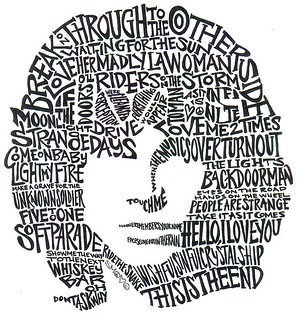
Words carry a lot of meaning. I don’t mean that in the sense of synonyms and homonyms, but in the sense that the way we construct our sentences and phrases can carry – or not – far more meaning than the words alone should. It’s sometimes called “word pictures”
If you want to paint a mental picture of a girl who is sickly and frail, you would do well to stay away from the words “light” or “fair” in describing her skin and use “pale” or “ashen”. A dog that is scrawny will likely be viewed as unhealthy, while “slender” or “thin” may be viewed as fit and toned. If moving a bag or package, “hoisted”, “heaved” or “hefted” brings to mind a good deal of weight while “tossed” or “flipped” indicates a light load and easy task. A good thesaurus will help you find alternate words and a dictionary will help make sure you’re using them correctly. But it goes beyond this.
Sometimes the most powerful description is the one that does not directly say what you want to convey at all: “Don’t tell me the moon is shining; show me the glint of light on broken glass.” ~ Anton Checkhov
By using the “show, don’t tell” means of story telling you place the reader inside the narrative seeing the scene, not being told what there is to see.
“Steve was having trouble keeping his eyes on his work with her standing so close. Her figure was a perfect blend of athletic and curvaceous. Topped with the face of an angel, framed in an ebony mane, he found her quite irresistible.” In this passage I could have gone into great length describing the fullness of her breasts, the curve of her buttocks, well-toned legs, the shape of her face, eyes, nose, lips and the style and length of her hair. Many authors do. I chose to allow the reader to form their own mental image of Janis based on their own preferences and experience. The details weren’t important to the story, so I granted the reader license to create them.
“Fortunately it was quite early in the morning; cool, and the snake had not yet had its coffee. I dispatched it easily and with little fuss.” Sometimes using a little humor as a metaphor can describe a scene or the conditions better than a lengthy explanation that will slow the action. Short stories especially benefit from an economy of words.
“But once in a while – when in a highly charged emotional state — poetry drips from the point of my pencil.” Mental imagery helps describe the anguish of writing poetry.
We stood, staring at one another for several moments. Her eyes were wide and moist, pleading with me to give up my quest. My eyes were wet too, I loved Jillian, but I hated living like a rat in a box.
“I’m going, Jillian.” I whispered, “Will you come with me?”
Her eyes overflowed, tears streamed down her cheeks, “I can’t. I’m scared Nikki, I just can’t.”
I beat the tickets I still clutched against my leg a few times, clamped my lips together as I nodded slowly then walked into my room and closed the door. I needed to pack.
There is a great deal of anguish in that last paragraph, but does it need to be described? Do I need to spell out his conflict, his breaking heart, his frustration in words? I don’t think so; it’s all there, tucked in between the lines.
Using a few well-turned phrases can cut out a lot of narrative clutter and streamline a story. What are some of your favorite word-picture passages?

